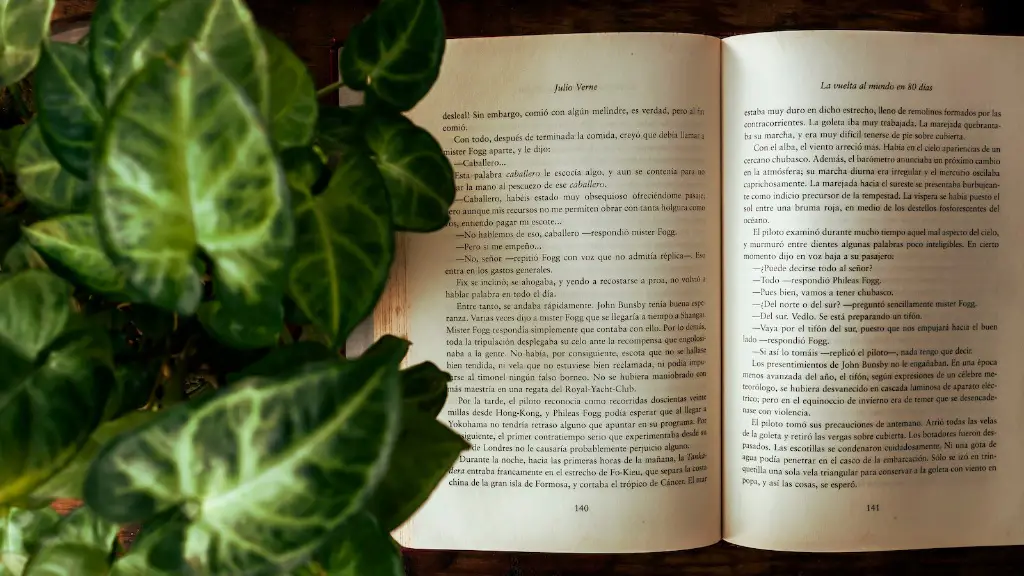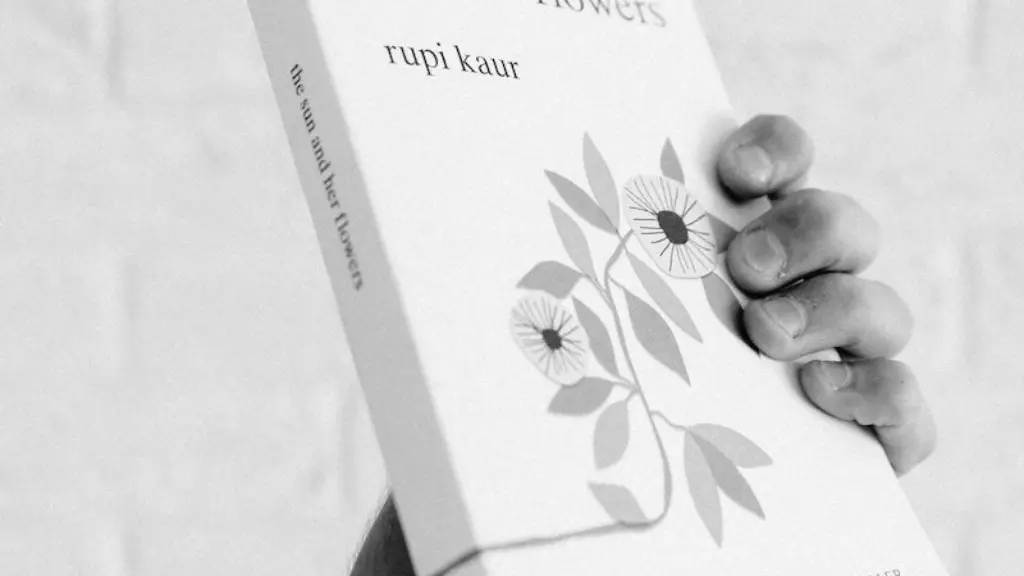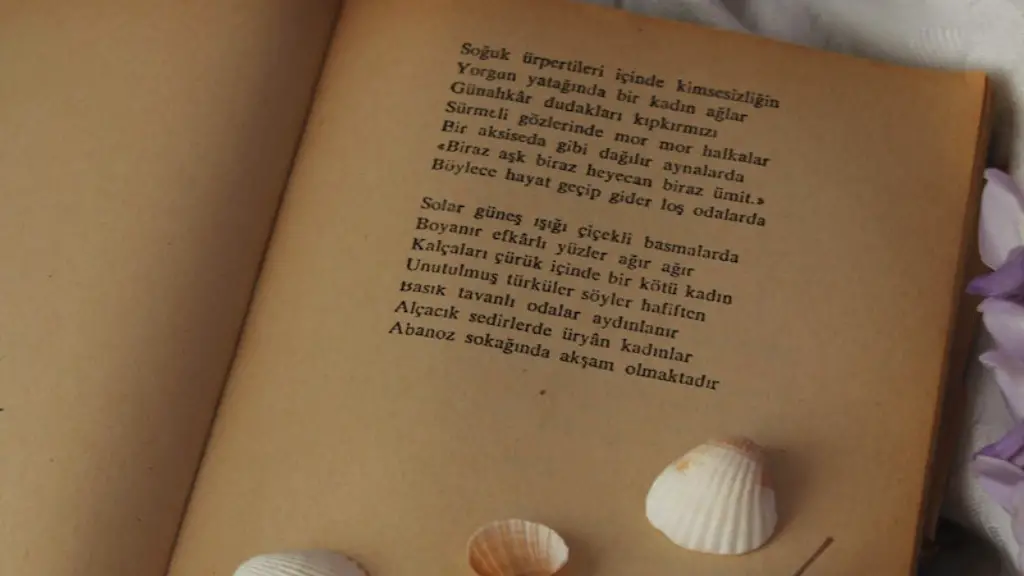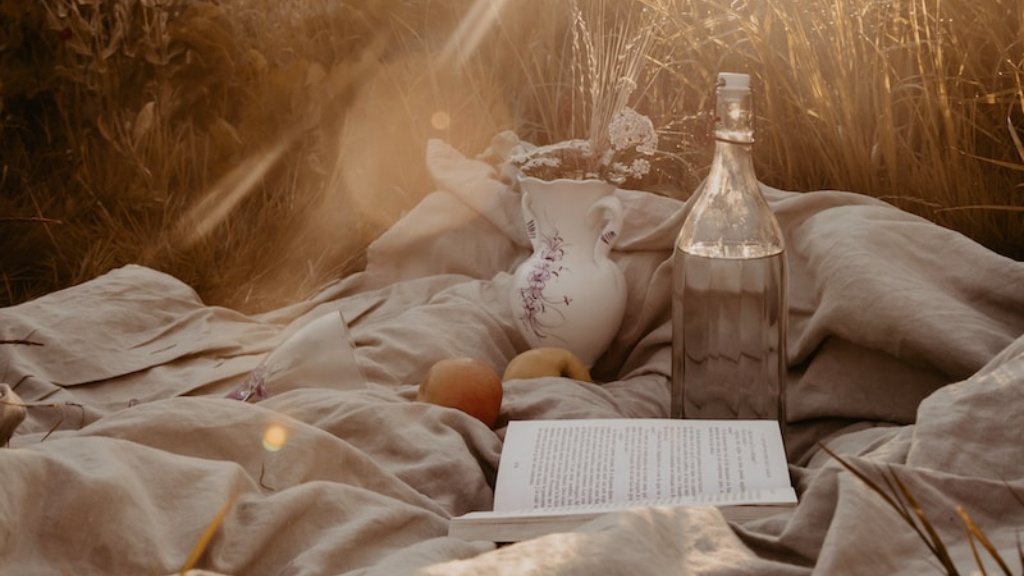Definition of Poetry
Poetry is a form of literary art in which language is used to convey an emotion or idea in a vivid and imaginative way. It usually follows an identifiable pattern of meter or verse and has a rhythmic, often musical, quality. Poetry has been used for centuries to explore the depths of human experience, from cosmic mysteries to everyday observations. The term “poetry” is derived from the Latin word poeta, a title originally given to the ancient Roman epic poets such as Virgil and Horace.
Types of Poetry
There are three main types of poetry: narrative, lyrical, and dramatic. Each has its own distinct style and purpose.
Narrative Poetry
Narrative poetry focuses on the telling of stories. This type of poem is often structured around a central event and usually follows a chronological order. Examples of narrative poetry include the epic works of Homer and Virgil, such as the Iliad and the Aeneid. Longer narrative poems like these often use extended similes and metaphors to explore themes of heroism, honour, and fate. Short narrative poems, such as ballads, works of the Romantic poets, and modern-day songs, are more focused on telling a particular story in a creative, succinct way.
Lyrical Poetry
Lyrical poems express the thoughts and feelings of an individual. This type of poetry is typically more introspective in nature and often focuses on personal musings. Lyrical poems typically use a more conversational tone and are less structured than narrative or dramatic poems. Common forms of lyrical poetry include the sonnet, ode, and villanelle. Examples of lyrical poetry range from Shakespeare’s sonnets to modern-day songs.
Dramatic Poetry
Dramatic poems are written to be read or performed. This type of poem often conveys deep emotion and can be used to explore difficult topics. The focus is on character and dialogue rather than the plot. An example of dramatic poetry is the monologue, which presents a single, continuous dialogue. This type of poem often centers around a particular theme or moral message.
History of Poetry
The history of poetry goes back to ancient civilizations, with examples being found in the ancient Sumerian and Egyptian literature. However, it was the ancient Greeks and Romans who really popularized the form. The Greeks in particular elevated poetry to a sacred art form, as evidenced by their worship of the gods Apollo and Orpheus, who were both poets.
The history of poetry in the English language began in the Middle Ages, with works such as Beowulf and Sir Gawain and the Green Knight. This period saw the rise of the sonnet, originally a romantic form of poetry in England, and the rise of the metaphysical poets, such as John Donne and Andrew Marvell. Other notable poets of this period include William Shakespeare, Edmund Spenser, and Christopher Marlowe.
Traditional Poetic Forms
Poetry is characterized by a variety of traditional poetic forms. These forms are used to organize a poem into an understandable structure, determine the poems length and rhythm, and add depth to the poem. Common poetic forms include ballad, elegy, haiku, and ode.
The ballad is one of the oldest forms of poetry. It is usually written in stanzas and has a simple, often repetitive, rhyme scheme. Ballads often tell engaging stories with characters and plot development, making them popular for entertainment.
The elegy is a poem that is written as a lament for the deceased. The poem often expresses deep mourning, which can be done in a variety of ways, from simple eulogy to complex reflections on mortality. The most famous example of an elegy is John Milton’s Lycidas.
The haiku is a Japanese form of poetry consisting of three lines, with the first and last having five syllables and the middle line having seven syllables. Haikus often describe nature and can be written on a variety of topics.
The ode is a form of lyric poetry that is often written in stanzas with a specific rhyme and meter. Odes typically express strong emotions, such as praise, sorrow, or joy. Famous examples of odes include Wordsworth’s Ode on Intimations of Immortality and Keats’ Ode to a Nightingale.
Modern Poetry
The modern era of poetry began in the 19th century, with poets such as Walt Whitman and Emily Dickinson writing in a style that was both innovative and personal. Since then, a variety of modern poets have continued to push the boundaries of the form.
One of the most well-known modern poets is T.S. Eliot. His poem The Waste Land explores the destruction of World War I, as well as the disintegration of culture and faith in the wake of the war. Other modern poets of note include W.H. Auden, Sylvia Plath, and Robert Frost.
Poetry and Technology
Technology has had a major impact on poetry, both in the way it is written and the way it is read. The internet has made it possible for more people than ever before to share their work, creating a vibrant poetry community. Social media has also become a common platform for poetry, with authors using it to build an audience and connect with readers.
Technology is also being used to make poetry more accessible. Online tools such as rhyme dictionaries and AI-based poetry generators make it easier for authors to create new work. Other tools such as word processors and text editors allow poets to quickly revise their work and share it with the world.
Impact of Poetry
More than just a form of entertainment, poetry has had a profound impact on society. It has been used to express political and social messages, to comfort those in difficult times, and to connect with deep truths. Poetry has also been used to deepen our understanding of our own life experiences and explore questions of identity, faith, and morality.
Poetry is also a way to express emotions and experiences in an accessible, meaningful way. By its very nature, poetry invites readers to think differently and open their minds to perspectives they may not have encountered before. It has the power to inspire, challenge, and transport readers in a way that few other forms of literature can.
Modern Poets
Many contemporary poets have made an impact on the world of poetry. Among the most notable modern poets are Margaret Atwood, Sharon Olds, and W.S. Merwin.
Margaret Atwood is a prolific Canadian author whose work has been acclaimed and admired for decades. Her poetry highlights social and environmental issues, and her work often includes themes of feminism and political activism.
Sharon Olds is an American poet whose work explores love, family, and relationships. Her poetry has won numerous awards, including the 2013 Pulitzer Prize in poetry.
W.S. Merwin is an American poet who has explored topics such as ecology and lost love. His award-winning work is noted for its stripped-down, minimalist style.
Education and Study of Poetry
The study and appreciation of poetry is now a common part of school curricula. By exploring the nuances of poetic language, students can gain an appreciation for the power of literature and the impact of words.
In addition to traditional approaches to the study of poetry, technology has opened up new possibilities. Online and mobile tools such as apps and online communities make it easier than ever to explore the world of poetry.
Influence of Poetry on Culture
Poetry has had a profound influence on culture. From ancient epics to modern-day rap and spoken word, poetry has been used to tell stories, express emotion, and articulate shared values. Poetry has also been used to inspire social movements, offering poignant narratives that elevate the voices of the marginalized.
The influence of poetry goes beyond the written word. Poetry can be found in visual art, music, and even fashion. Poetry has become a powerful cultural force, inspiring creativity and uniting people through its universal themes and messages.



